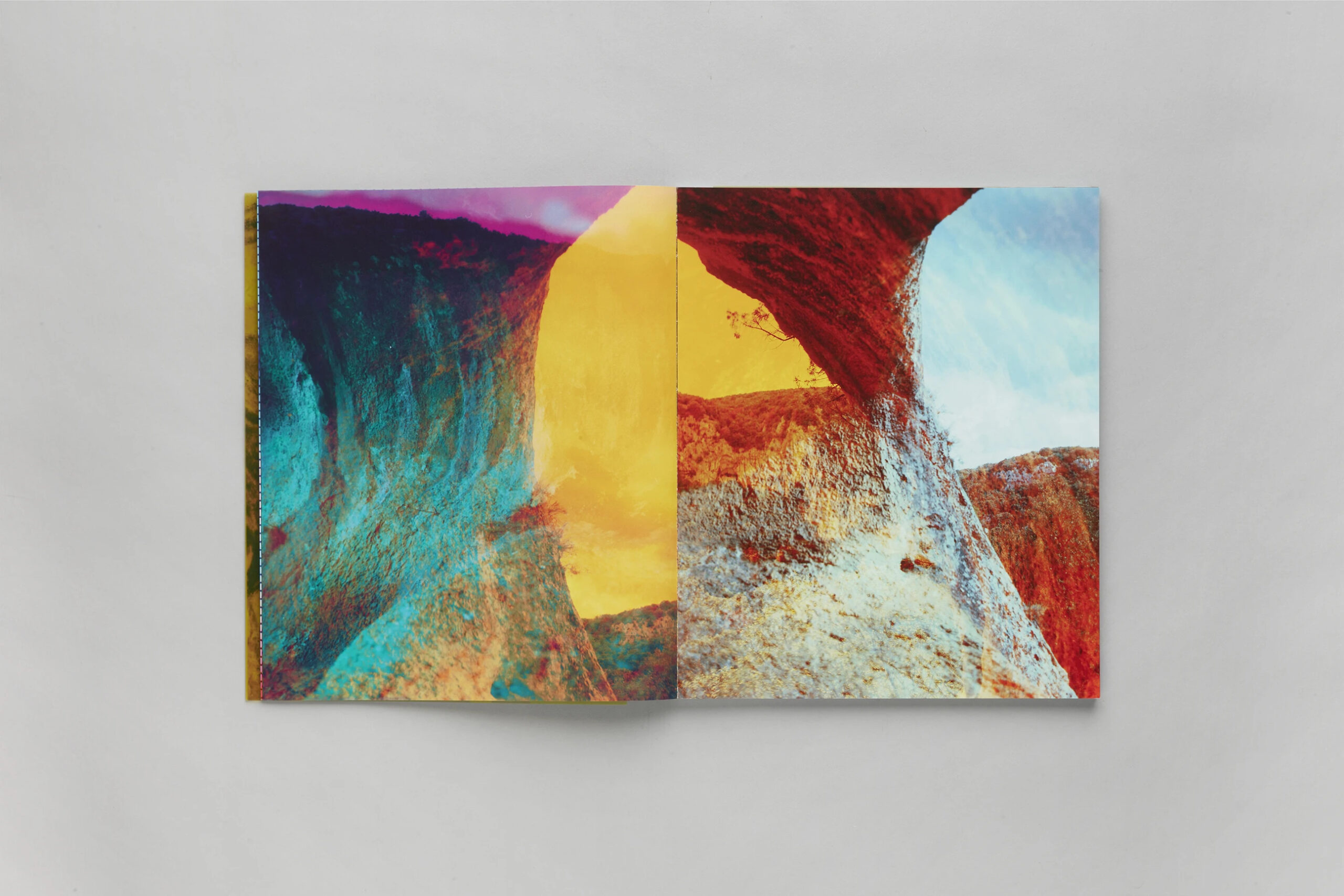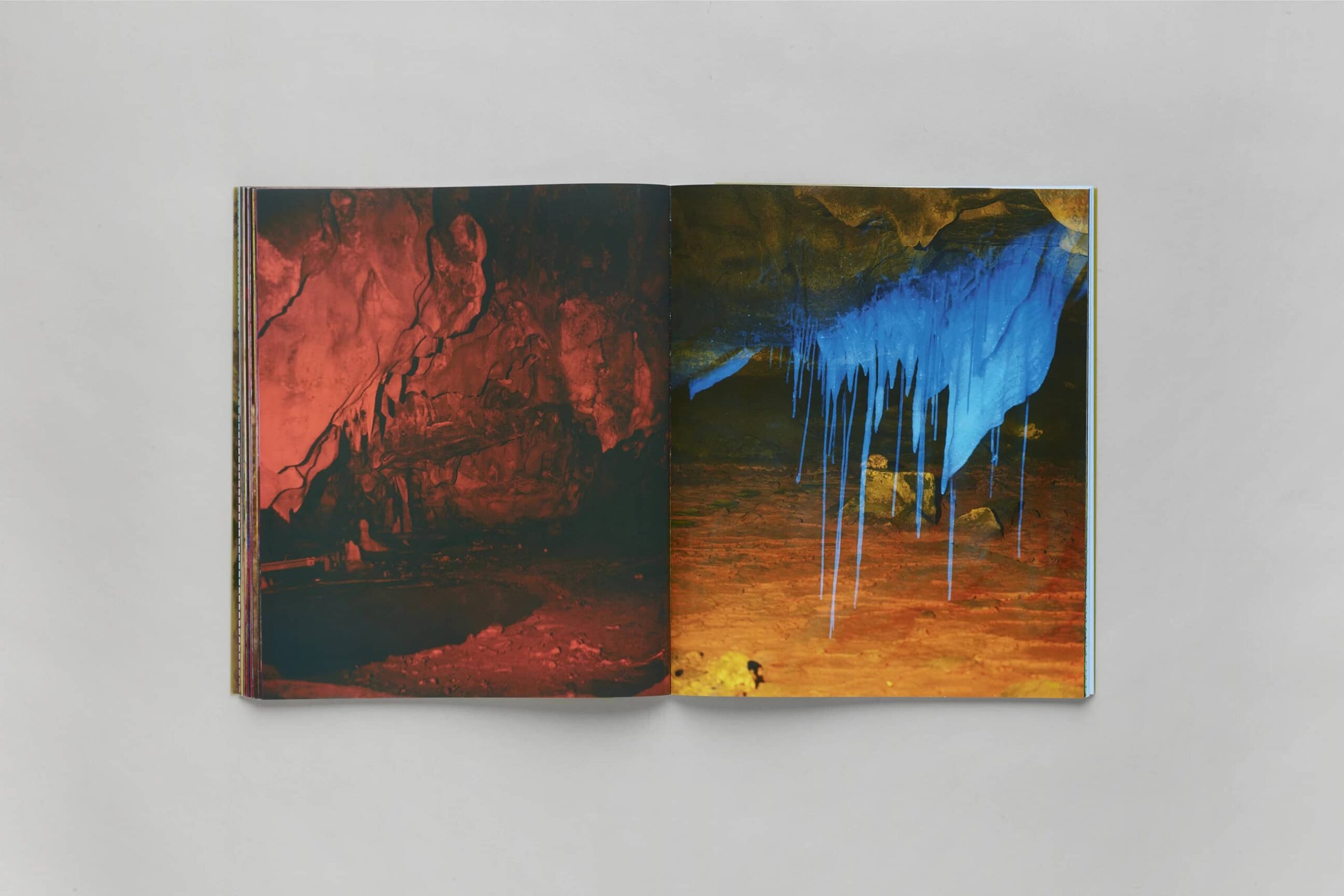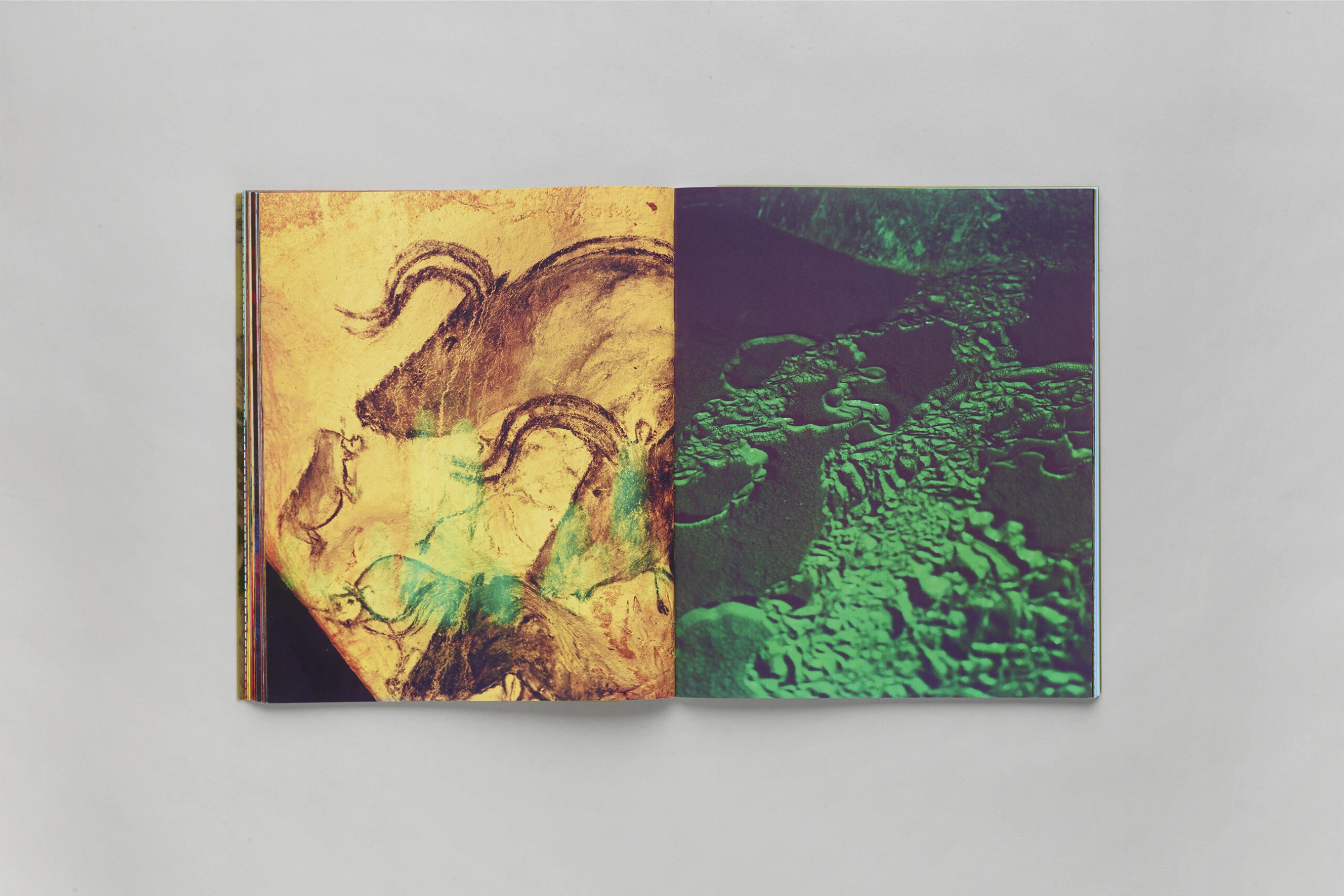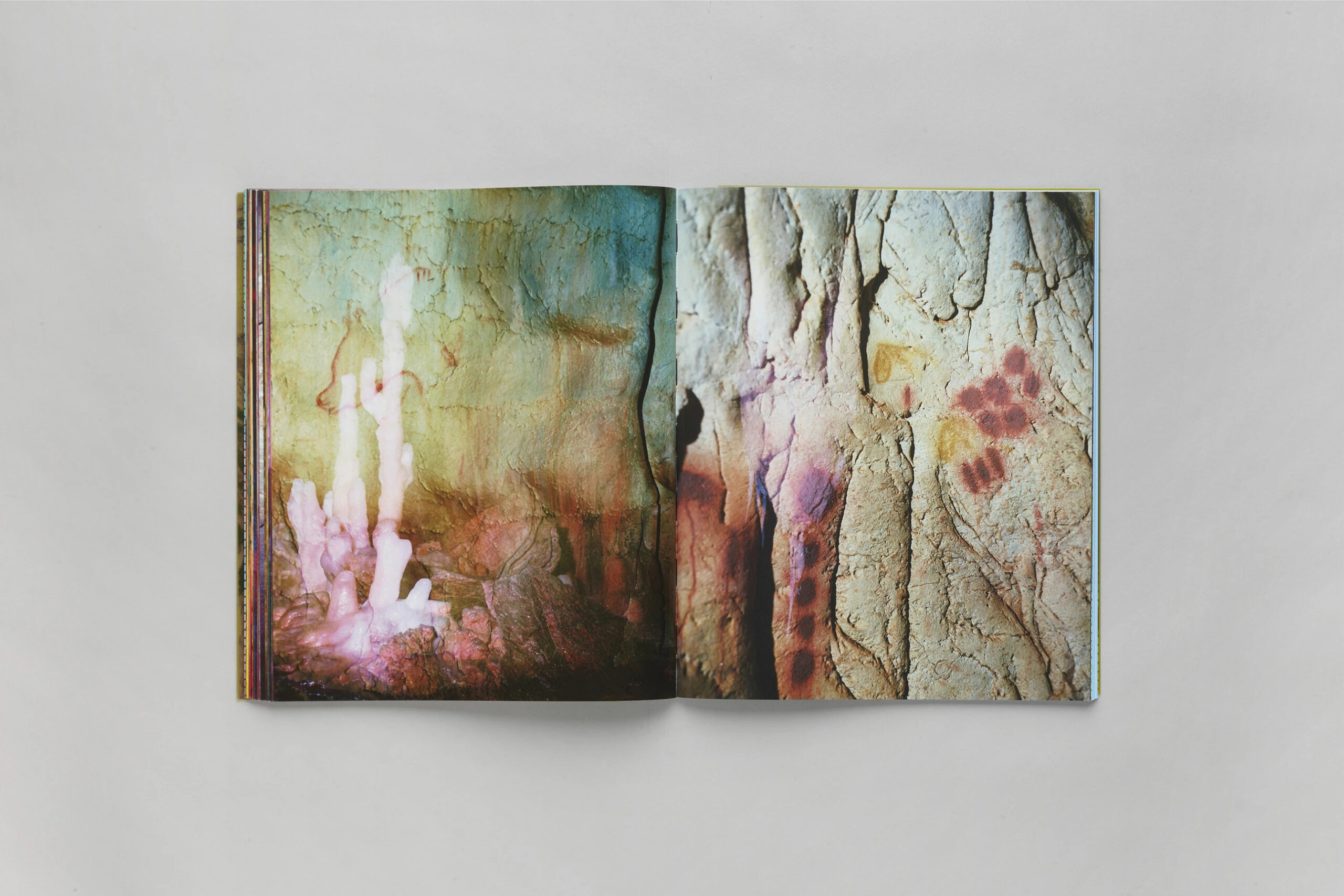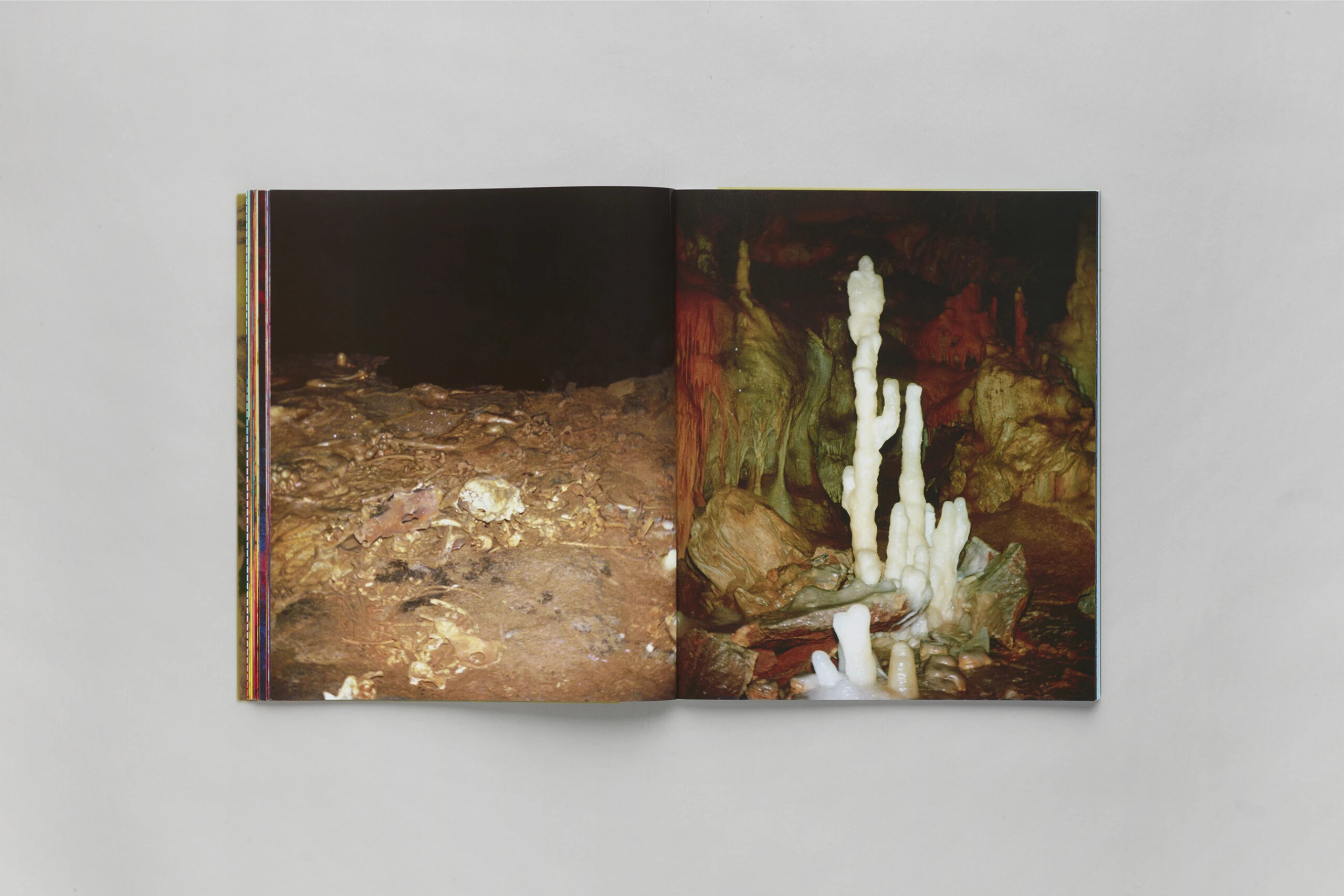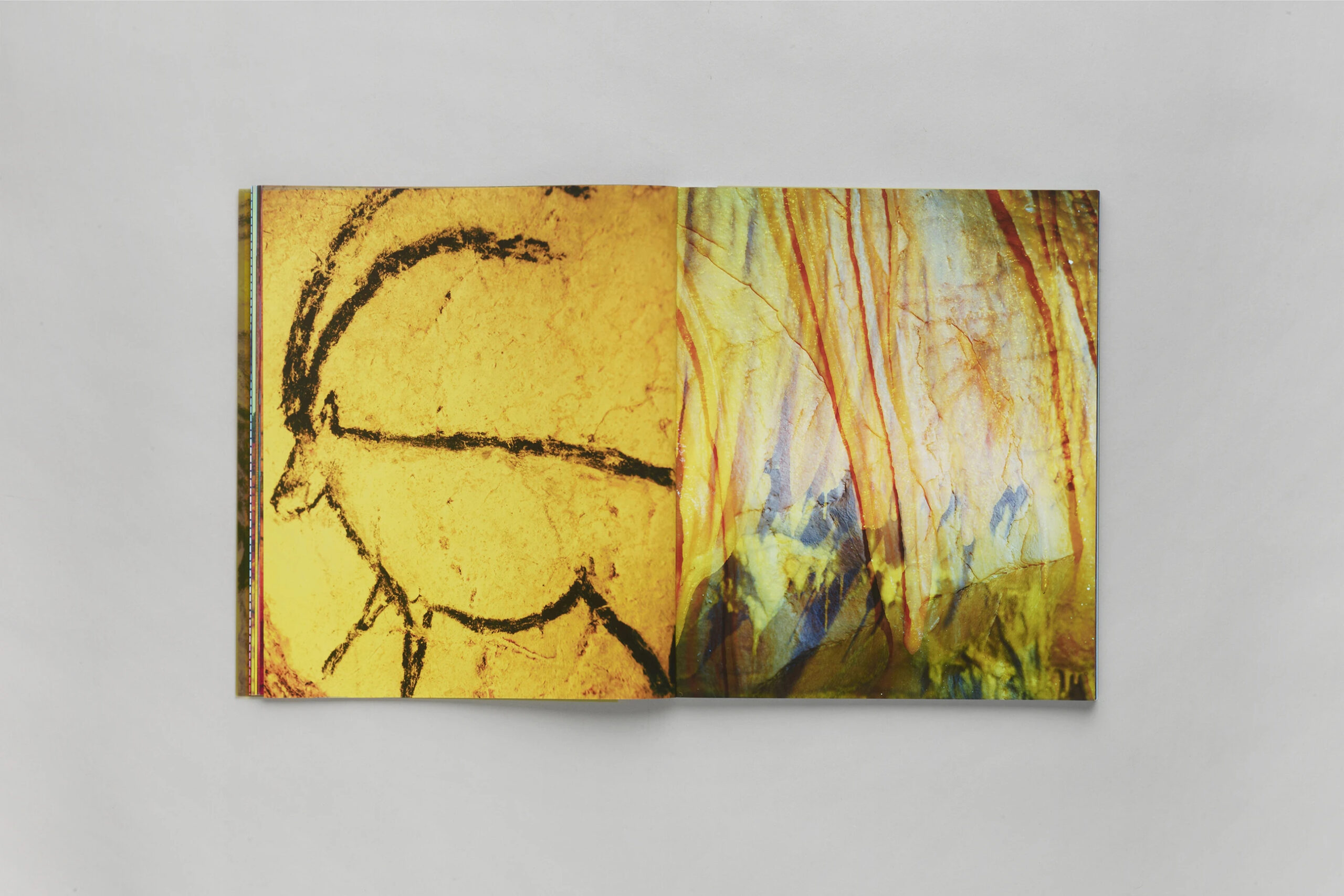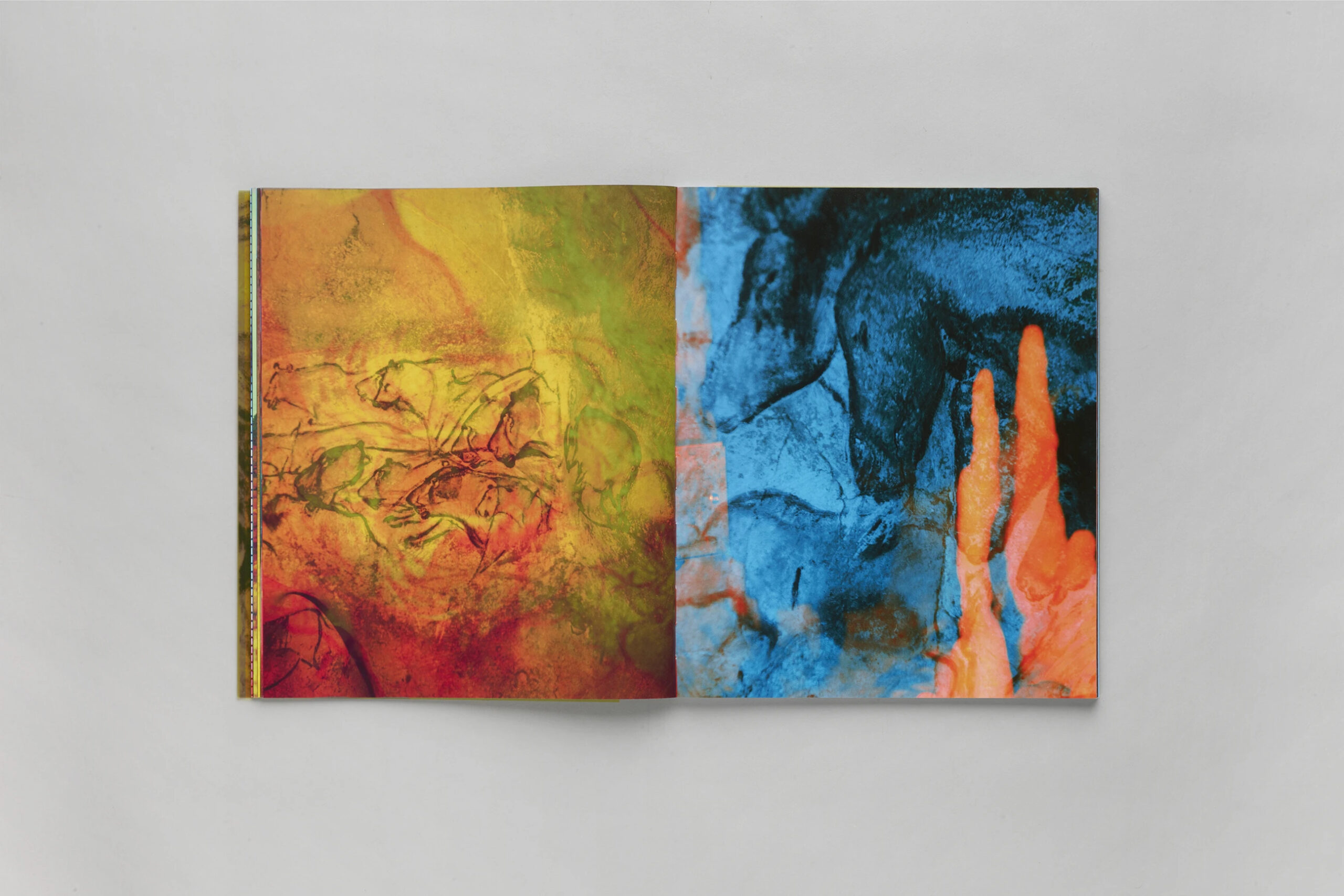Découverte en Ardèche dans le sud de la France en 1994, la grotte Chauvet est un site important pour l’histoire de l’humanité, tant pour les qualités techniques et esthétiques des peintures anciennes sur ses parois que pour les autres objets trouvés dans les chambres de la grotte. L’une des plus anciennes grottes peintes au monde, elle est fermée au public depuis sa découverte et reste à ce jour un objet de fascination pour les hommes du monde entier, marquant un tournant majeur dans l’art pariétal et dans l’histoire des premiers humains modernes. .
En s’aventurant au cœur de ce site paléolithique unique, Philippe Durand relève un défi artistique considérable. La grotte se présente comme un univers clos, un ensemble de signes quantifiables au sein d’une architecture naturelle spectaculaire, un lieu où le temps semble s’être arrêté. Durand s’éloigne volontairement des représentations objectives, pour offrir une fenêtre plus intime, plus subjective sur la grotte et son art. Pour y parvenir, il combine des filtres de couleur avec des techniques d’exposition multiples.
Durand définit ainsi un espace de création et de représentation non objectif, capable de focaliser différemment les attentions de chaque spectateur. Plutôt que de travailler la couleur sur un mode réaliste, il s’en sert pour suggérer une information ou un code spécifique, comme en photographie astronomique ou microscopique. Durand déniche l’idée originale d’une grotte de rêves et d’imagination, nous entraînant dans un voyage psychédélique à travers l’un des sites les plus célèbres au monde pour l’art préhistorique.
Né à Paris en 1963, Philippe Durand est lauréat du deuxième concours de photographie rupestre Chauvet. Le livre est le résultat de son accès privilégié à la grotte d’origine pour une série de visites privées, chacune donnant lieu à une séance photo inoubliable.
Discovered in the Ardèche region of southern France in 1994, the Chauvet cave is an important site for the history of humankind, as much for the technical and aesthetic qualities of the ancient paintings on its walls as for the other artefacts found in the cave’s chambers. One of the oldest painted caves in the world, it has been closed to the public since its discovery and remains to this day an object of fascination for people everywhere, marking a major turning point in parietal art and in the history of the first modern humans.
By venturing deep into heart of this unique paleolithic site, Philippe Durand takes up a considerable artistic challenge. The cave presents itself as a closed universe, a quantifiable set of signs within a spectacular natural architecture, a place where time seems to stand still. Durand purposefully distances himself from objective representations, in order to offer a more intimate, more subjective window into the cave and its art. To achieve this, he combines colour filters with multiple exposure techniques.
Durand thus defines a space of creation and non-objective representation, one able to focus the attentions of each viewer in a different way. Rather than working with colour in a realist mode, he uses it to suggest an element of information or a specific code, as in astronomical or microscopic photography. Durand unearths the original idea of a cave of dreams and imagination, leading us on a psychedelic journey through one of the world’s most celebrated sites for prehistoric art.
Born in Paris in 1963, Philippe Durand was the winner of the second Chauvet cave photography competition. The book is the result of his privileged access to the original cave for a series of private visits, each giving rise to an unforgettable photography session.


